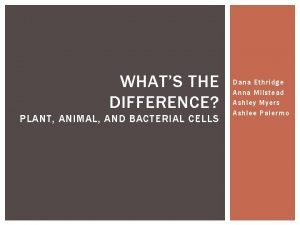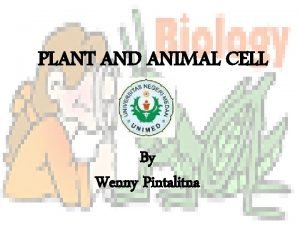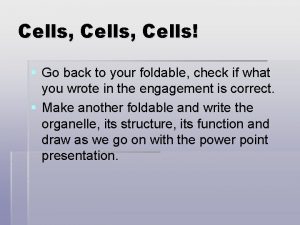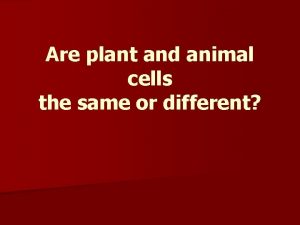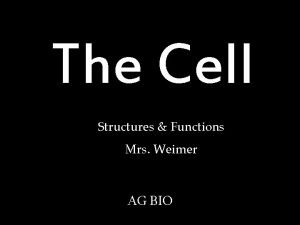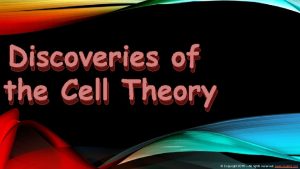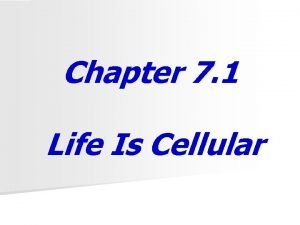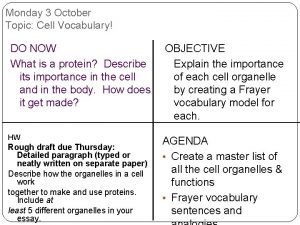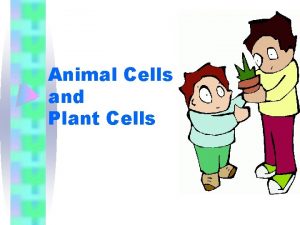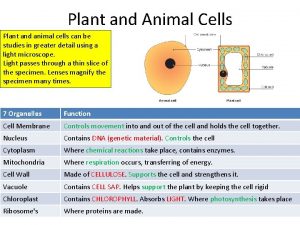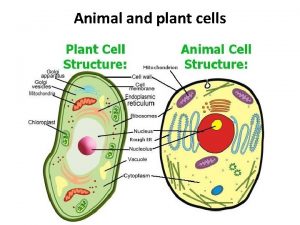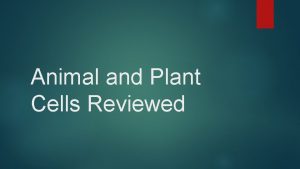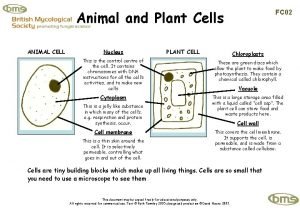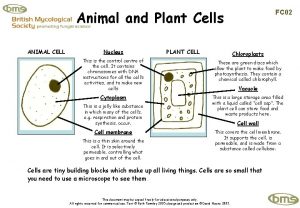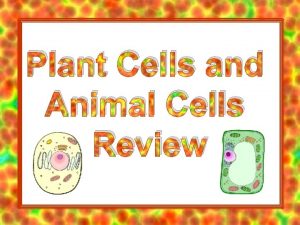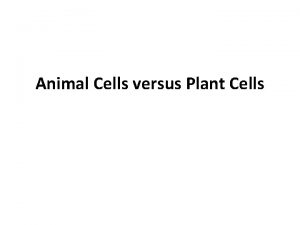An Overview of Animal and Plant Cells The















- Slides: 15

An Overview of Animal and Plant Cells The basic Unit of all life

Eukaryote Cells • Plant and Animal cells both have a nucleus and are called • EUKARYOTES • The Cell’s DNA is in the nucleus

Prokaryote Cells • Unlike Plant and animal cells Prokaryote cells do not have a nucleus • Their DNA is not enclosed but is loose in a region of the cell called “nucleoid region”

Cells contain many Organelles • Organelles are like small organs that provide life functions for the cell • Cytoplasm • Mitochondria • Nucleus • Plasma Membrane Animal Cell

Moving stuff from the nucleus • All of the materials that need to get to other cells to build our bodies needs to get from the nucleus to outside of the cell:

Pathway of a protein • Nucleus • Rough Endoplasmic Reticulum • Ribosomes • Golgi Bodies

Ribosomes • Ribosomes are a 2 part organelle that construct the proteins into long chains called amino acids • The ribosomes send these completed chains to the rough endoplasmic reticulum

Rough Endoplasmic Reticulum • Rough ER takes the amino acid chains of proteins and moves it through from the inside of the cell towards the smooth ER

Mitochondria • Organelle within the cell that takes sugars from our food and converts it to a molecule of energy called ATP • The mitochondria is the powerhouse of the cell.

Plant Cell • Plant cells have a cell wall • Chloroplasts • Large Central Vacuole

Chloroplasts • Provide the sugar that will be used by the mitochondria • In plants

Plasma Membrane Semi-Permeable Barrier protecting and enclosing the cell

Structure of the Membrane • Double twolayer system • This permits the membrane to select what enters and leaves the cell

Molecules that assist movement • Enzymes provide energy to allow movement of molecules – Concentration gradient – Chemical gradient • Proteins provide the pathway

Ribosomes • Ribosomes are a 2 part organelle that construct the proteins into long chains called amino acids • The ribosomes send these completed chains to the rough endoplasmic reticulum
 Plant vs animal cells venn diagram
Plant vs animal cells venn diagram Animal and plant cell similarities
Animal and plant cell similarities Venn diagram plant and animal cell
Venn diagram plant and animal cell What cell type
What cell type Plant cell strucutre
Plant cell strucutre Plant and animal cells
Plant and animal cells Whats the difference between plant and animal cells
Whats the difference between plant and animal cells Group of multicellular oxygen producers
Group of multicellular oxygen producers Cell theory foldable
Cell theory foldable Whats the difference between plant and animal cells
Whats the difference between plant and animal cells Different parts of the animal cell
Different parts of the animal cell Difference between plant cell and bacterial cell
Difference between plant cell and bacterial cell Cpalms investigating plant and animal cells
Cpalms investigating plant and animal cells Diffrences between plant and animal cells
Diffrences between plant and animal cells Animal cell and plant cell
Animal cell and plant cell Plant vs animal cells
Plant vs animal cells

